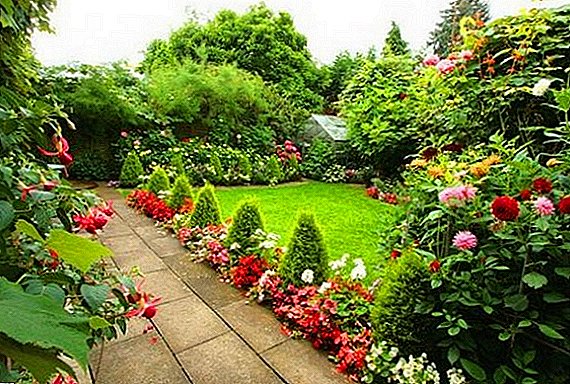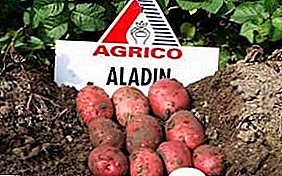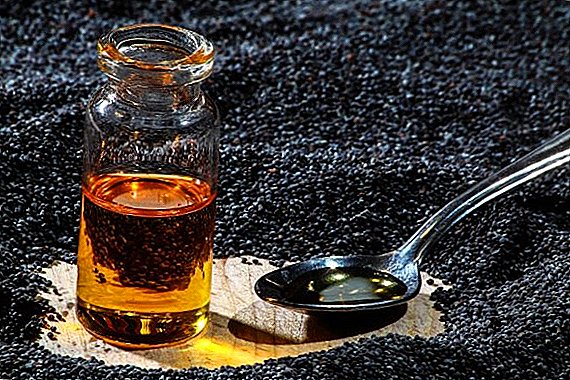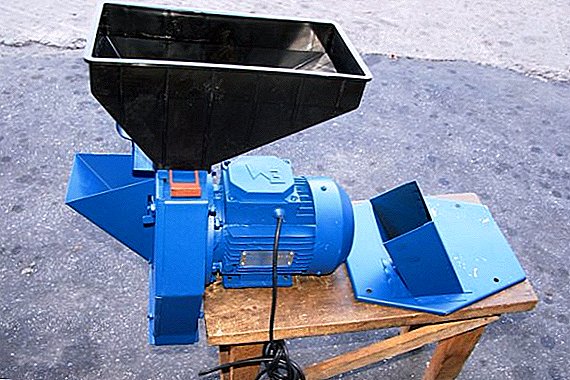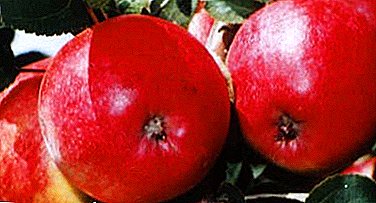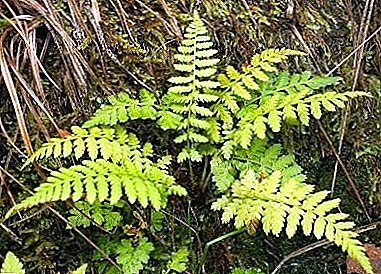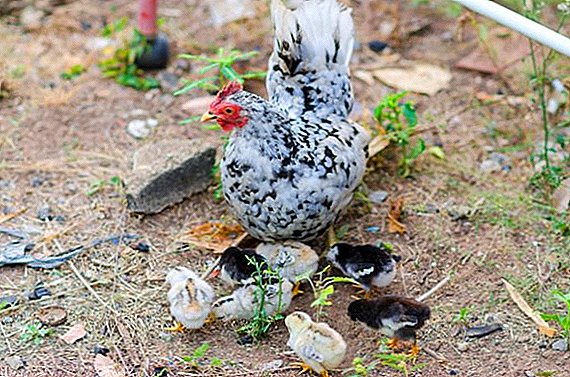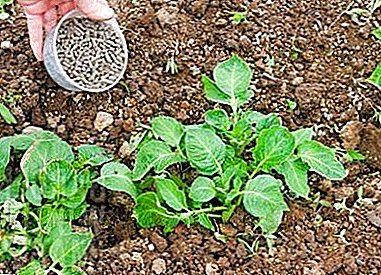
Potatoes are a vegetable crop that has poorly developed roots due to the increased growth of tubers. That is why the care is crucial fertilizer. On this depends whether you will be with the harvest and whether it will be of excellent quality.
What is the role of mineral fertilizers when planting a vegetable and its further growth? What feedings exist, what are needed for the successful cultivation of potatoes, what are their pros and cons - read on.
As well as recommendations and advice on how and at what stages of ripening tubers need to make them.
root is poorly developed root system due to intensive growth of tubers, soil at the next planting
What are these substances?
They are used for plant life support. By type they are classified into:
- Simple. Include one nutrient: potassium, superphosphate, ammonium nitrate, phosphorite flour, etc.
- Integrated. They contain two or more elements: fertika, kemira, nitrophoska, azophoska, nitrophosphate, etc.
Mineral fertilizers are divided into substances containing:
- nitrogen;
- phosphorus;
- potassium.
What are needed?
Potatoes primarily need the following minerals:
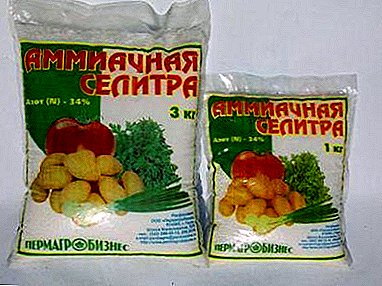 ammonium nitrate;
ammonium nitrate;- superphosphate;
- potassium chloride;
- phosphate rock;
- urea (carbamide).
But from a wide range of microelements, potatoes need nitrogen most of all. The easily digestible form of nitrogen is what you need for a vegetable. Without it, the plant does not grow well, the leaves turn pale, and the roots become smaller.
Of potash substances need those where there is little chlorine. With a lack of potassium flowers become smaller or not tied.
With a deficiency of phosphorus bushes bloom late, the leaves of potatoes darken.
In detail about what fertilizers and in what proportions need to be applied to the earth when growing potatoes, read in this article.
Advantages and disadvantages
Weigh the pros and cons of the use of chemicals in the dressing of potatoes.
So, for:
- Modern mineral mixtures have reached a safer level of agrochemistry.
- High efficiency. The harvest is great, there's nowhere to put the potatoes? Is this not the result of proper use of mineral chemical compounds?
- The plant is healthier and steadfast. After all, a healthy bush is not so easy to overcome pests.
- Selective feeding. You can make one or more of the plant missing trace elements.
- Fertilization is not difficult. Mixtures are easy to store and transport.
- Cost effective. Having realized surplus yield, we make a profit.
And against:
- Mineral fertilizers can accumulate in plants, in the soil, affect its properties (salinity, acidity, etc.). The concentration of hazardous substances in potatoes is the biggest disadvantage in their use.
- Even complex feedings are sometimes insufficient for good nutrition of the plant. And the budget will lay down the cost of acquiring additional micronutrients.
- The dosage of applied chemicals is easily disrupted, and then the plant may suffer. For example, with a high saturation of soil with nitrogen, the roots of potatoes can get burned.
Why do we need?
- Potato bushes have a weak root system. The plant needs an active intake of nutrients. The presence of trace elements in the soil provides a good vegetation of plants.
- Balanced artificial nutrition affects the quality of tubers, improves their taste and quantity.
- Potassium increases pest resistance.
- Phosphate plants help the plant to adapt to abrupt climate changes, develop frost resistance, increase the weight of starch, and keep plant tubers better.
- Provides high protein content. In potatoes grown with the use of chemical mixtures, it is two times higher than in that it grew without a balanced mineral nutrition.
When to use?
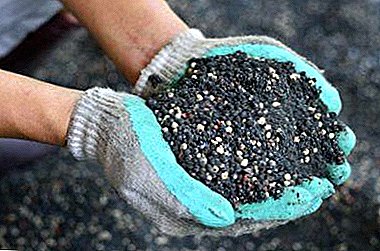 In early spring, nitrogen fertilizers are applied to the soil. They will need potatoes for active growing season.
In early spring, nitrogen fertilizers are applied to the soil. They will need potatoes for active growing season.- After flowering, nitrogen is no longer used, otherwise the tops will grow due to tubers.
- During the growth period, the potatoes need to be fed again, but you should also take into account that if the soil is sandy, the trace elements are partially washed away by rains.
- In the period of the first hilling, when the tops reach a height of at least 12 cm, they make a liquid dressing.
- During the active growing season of the plant we make superphosphate at the rate of 2 tbsp. l per meter of land. Or nutritional mixture: one part of phosphorus and nitrogen, two parts of potash fertilizers. Add 25 g of this solution to a bucket of water.
Mineral top dressings bring in soil in various ways:
- root - put the fertilizer under the root, slightly loosening the ground;
- foliar - spraying.
Root top dressings do in a clear sunny weather. This is due to the process of photosynthesis. It is better to add foliar top dressings when it is cloudy or in the evening, otherwise the solution dries quickly and will harm the leaves.
Details on how, what and in what quantities it is best to fertilize potatoes, read here.
Kinds
Nitrogen
Varieties of nitrogen fertilizers:
- Ammonia nitrogen (ammonium nitrate, ammonium sulphate) - the most popular and valuable supplement among gardeners. High solubility in water. Soils are suitable for any.
- Nitrate nitrogen (sodium nitrate) - very effective, quickly absorbed, used in spring and summer. Restriction: not suitable for black soil, in greenhouses.
- Amide nitrogen (urea, calcium cyanamide) - the main use of fertilizer is feeding. Instantly acts, acidifies the earth. Produced in metallurgy. Take precautions.
Nitrogen substances are actively involved in the process of vegetation. Outwardly, it looks like this: the stem thickens, the leaves grow larger, the bushes look lush and healthier. Due to the powerful influx of protein into the tubers, they become larger and their number increases.
Important! Excess nitrogen can cause abundant growth of leaves, not root crops. In this case, a high yield is not necessary.
Mineral dressing is applied to the soil in one of three ways:
 The main. This is done before tillage, or just before sowing, so that the bulk of mineral substances enter the ground. Contributed by scattering. You can use the dispenser.
The main. This is done before tillage, or just before sowing, so that the bulk of mineral substances enter the ground. Contributed by scattering. You can use the dispenser.- Priposevnym. When applied simultaneously with the crop.
- As a top dressing. Special nutrients are introduced during the growing season.
How to contribute:
- Nitrogen supplements should be made carefully, following the instructions, carefully following the instructions.
- The distance from the fertilizer to the bush should be within 20 cm.
- Be careful not to get fertilizer on the leaves.
- When planting potatoes, 5 g of ammonium nitrate or 7 g of ammonium sulfate is poured into each well.
The solution to strengthen the roots of potatoes - 15 liters of water 30 g of urea. Half a liter of solution under a bush.
Phosphoric
Phosphate fertilizers are divided into:
- Water soluble. Superphosphate is simple and double - a storehouse of phosphorus. The substance is granulated, quickly dissolves. It is applied on all types of soil. Affects the root system, making it strong and viable.
- Half soluble The precipitate is a fertilizer that does not dissolve in water. Use low-acid solutions. Suitable soils with high acidity.
- Sparingly soluble. Phosphoric flour - dissolves only if very carefully mixed. It is recommended to use only on acid soils.
What is good for potatoes:
- Phosphorus regulates the permeability of cell membranes, provides the plant with energy for the active growth of bushes. The plant fertilized with phosphorus substances becomes more resistant to diseases, the content of protein and sugar increases in its tubers, the root system becomes strong. Landings result in a guaranteed yield.
- When phosphorus starvation plant begins to lag in growth. The leaves darken, flowers are tied less, the tubers are covered with brown spots, the percentage of sugar content in them falls.
Important! The plant can receive phosphorus only from special phosphoric additives.
How to apply fertilizer:
- Phosphate fertilizers are applied before sowing, during sowing and further fertilizing.
- Superphosphate granules are applied to the soil in the spring when the soil is prepared for planting.
- The powder must be diluted with water and applied as a top dressing of growing bushes.
- The plant reacts particularly hard if phosphorus is not sufficient in the early growing season of the potato. In the future, correct the results of phosphorus starvation will be almost impossible.
- Superphosphate is made at the rate of 1 kg of substance per 1 hundred or 3-4 g per shrub.
- You can spend foliar sub-feed, when the potato has faded, and before it is harvested about a month. Make the following solution: diluted with 10 liters of water, stirring 100 g of superphosphate. At 0.5 liters under a bush.
Potash
Potash fertilizers - concentrated chloride and sulphate salts are divided into:
 Potassium chloride easily soluble in water. Effective in clay soil.
Potassium chloride easily soluble in water. Effective in clay soil.- Potassium salt - also dissolves quickly, but it is suitable for sandy soils in which there is little potassium. It is not used in the autumn period, because of groundwater, its concentration rapidly decreases. In the autumn, the use of this fertilizer is not desirable, because there is a rapid leaching of groundwater.
What is good for potatoes:
- Potash supplements are very necessary for potatoes. They improve the soil characteristics, develop the root system, help to form a large number of tubers, improve their taste. The lack of potassium affects the appearance of the plant: the bushes grow stunted, the stems fall. The plant darkens, dries.
An overdose of chlorine in vegetative organs leads to the production of potatoes with a high content of nitratesdangerous to human life.
How to apply fertilizer:
- It is most effective to apply potash fertilizers in the fall, so that chlorine is neutralized over the winter and partially left with melt water.
- Potash supplements that do not contain chlorine are introduced in small doses in the warm season.
- During the beginning of flowering, in order to speed up the process, fertilize with the following solution: 15-20 g of potassium sulfate, dilute 15 g of wood ash in 10 l of water. 1 liter under a bush.
Complex
Complex mineral fertilizers (nitrogen-potassium and phosphorus-potassium) - substances that provide potatoes with a complete set of essential trace elements. These substances contain two or more nutrients. It is enough to read the name on the bag, and its composition will become clear. If at the root of "nitro" and "ammonium" - then in the mixture of nitrogen, if "fos" - phosphorus, "ka" - potassium.
They are divided into:
- Complicated (mixtures) - The result of a chemical reaction of certain elements.
- Hard mixed - The result of mixing the finished fertilizer with further transformations.
- Mixed - The result of direct mixing of dry or granular components. Regulated according to the type of soil. Nitrogen, phosphorus and potassium in them is set in the right proportions.
"Azofoska"
"Azofoska" (or "Nitroammofoska") - mineral complex fertilizer, consisting of three chemical elements: nitrogen, potassium and phosphorus. It has a granular structure. The tool is processed in such a way that, regardless of the retention period, it keeps a crumbly state. Means universally, is used for all types of soils.
What is good for potatoes:
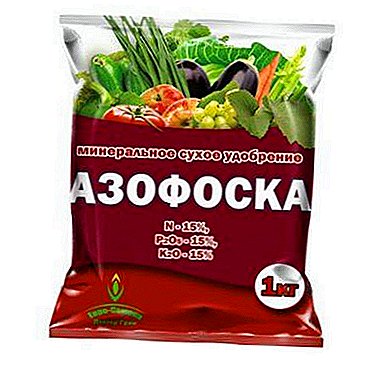 The drug fully meets the needs of plants in useful trace elements.
The drug fully meets the needs of plants in useful trace elements.- It can be used as the main feeding, or in addition to other fertilizers.
- Actively influences growth, strengthens the roots.
- Helps potatoes enter flowering time.
- Increases resistance to frost, dry weather, etc.
- Protects the vegetable from many diseases.
- Improves the taste of the grown crop.
- Increases the duration of crop safety.
- Remains in the soil for a long time, not washed out by groundwater or rainwater.
On a note. "Azofoska" dissolves slowly, partially remains in the soil the next year.
How to apply fertilizer:
- For heavy, dense soils the complex preparation needs to be brought in the fall, right after harvesting, as the main top dressing. Based on 30-40 g per 1 square. meter, or up to 4 kg per 1 hectare.
- Fertilizer is applied during this period before the onset of cold weather, the earth should be warm and humid.
- On light soils, "Azofoska" is introduced in spring, when the first plowing of the vegetable garden takes place. Otherwise, the bulk of the nutrients will be washed with melt water.
- When planting potatoes, the preparation is laid separately in the wells of 3-4 g.
- When the seedlings appear, you need to count two weeks and feed the potatoes "Azofoskoy" again. The following feeding at the beginning of the formation of buds.
Bring "Azofoska" root or foliar way.
Root:
- The granules are dissolved in water (10-15 g of fertilizer per 10 liters of water).
- In the middle of the beds deepen groove 4-5 cm.
- Fertilizer is applied to it: 5-6 g per meter.
- Sprinkle with soil.
Foliar:
- Make the solution as above.
- Carry out dressing.
If, during the application, Azafoska falls into cold soil in the fall, nitrates will accumulate from above.
"Fertika"
Complex fertilizer "Fertika Potato" - the formula of trace elements and nutrients needed for planting and caring for potatoes.
The drug is available in crystals. Fully soluble on contact with water. Contains a lot of phosphorus, up to 20% in aqueous solution.
What is good for potatoes:
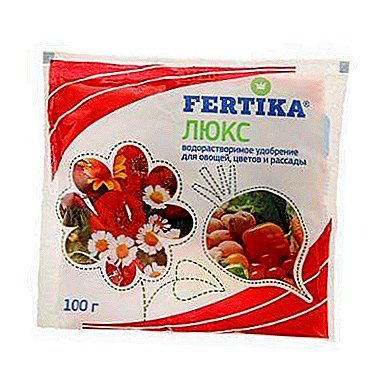 The composition of the drug - macro - and micronutrients, optimally balanced, increase the yield of potatoes.
The composition of the drug - macro - and micronutrients, optimally balanced, increase the yield of potatoes.- Does not contain chlorine harmful to vegetables.
- Promotes the formation of buds and tubers.
- Strengthens the root system.
- Improves the quality of root crops.
- The plant as a whole becomes healthier, with bright saturated color of leaves.
Fertilizer Potato Fertilizer is made:
- The first time in the spring, when planting potatoes.
- In the future, when hilling the plant as a top dressing.
- The drug is granulated, it is simply poured into moist soil. Rainwater will dissolve the substance.
Kemira
Kemira Potato is an effective formula of chemical compounds, mineral complex top dressing. In it are included in the balanced calculated proportions all the microelements necessary for the life support of the plant. These are potassium, nitrogen, phosphorus, magnesium, boron, copper, selenium, manganese, molybdenum, sulfur, and zinc.
What is good for potatoes:
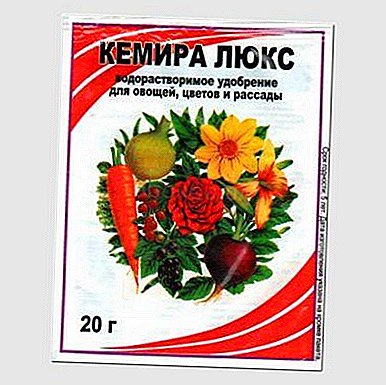 The set and proportions of chemical elements in the composition optimally meet the requirements of growing potatoes. As a result, the process of tuberization will increase, which means the harvest will increase.
The set and proportions of chemical elements in the composition optimally meet the requirements of growing potatoes. As a result, the process of tuberization will increase, which means the harvest will increase.- Does not contain chlorine, harmful to sensitive potatoes. Protects the crop from nitrates.
- Increases plant immunity to temperature extremes and protects against many diseases.
- Does not depend on the method of cultivation of the soil.
- Improved grown and harvested.
How to apply fertilizer:
- Introduce complex fertilizer "Kemira potato" or in liquid form, or in dry powder.
- The first feeding in the spring, while digging the garden. The following are already under dressing, embedded in the ground.
- Fertilized soil should be watered carefully.
- Micronutrients will gradually be digested by potatoes.
- The volume of the necessary substance is: 10 kg of fertilizer per one hundred vegetable garden or in accordance with the instructions on the package.
"Potato formula"
 "Potato formula" - a complex orgamineral fertilizer, balanced plant food for the entire season.
"Potato formula" - a complex orgamineral fertilizer, balanced plant food for the entire season.
It includes a set of macro and micronutrients that are very important for potatoes. It is used: at autumn digging of the earth, at landing, during growth, at an earthing up. And also as foliar application.
What is good for potatoes:
- Accelerates tuberization.
- A good helper for ripening quality tubers, tasty and lezhkie.
- Reduces harvest time by two weeks.
- Effective remedy against pests and diseases of potatoes.
On a note. "Potato formula" is simply indispensable for soils used in an intensive way.
Consider the instructions for use of the "Potato Formula". How to apply fertilizer:
- In the spring, one month before sowing, fertilizer is applied to the soil at the rate of 60 g per 1 square meter. meter.
- When planting: in the wells of 15-20 g of the substance. It will also help get rid of pests.
- As a basal bait: for 1 weave we plant 50-80 g of fertilizer per 1 liter of water.
Application rates
The rate of fertilizer per one hundred of potato crops is calculated based on the characteristics of the soil:
- For fertile soils: 1.5 kg of potassium + 2.5 kg of organic matter.
- For medium soils: 1.5 kg of potassium + 3 kg of nitrogen + 3 kg of organic matter.
- Problematic soils: 1 kg of saltpeter + 3 kg of phosphoric substances + 100 kg of organic matter.
About what fertilizers are needed for potatoes and how to apply them correctly, read here, and from this article you will learn how to properly fertilize potatoes for a good harvest.
Proper and timely use of mineral fertilizers for growing potatoes makes it easy to get the perfect harvest. Tasty and flavorful potatoes will be a reward!


 ammonium nitrate;
ammonium nitrate; In early spring, nitrogen fertilizers are applied to the soil. They will need potatoes for active growing season.
In early spring, nitrogen fertilizers are applied to the soil. They will need potatoes for active growing season. The main. This is done before tillage, or just before sowing, so that the bulk of mineral substances enter the ground. Contributed by scattering. You can use the dispenser.
The main. This is done before tillage, or just before sowing, so that the bulk of mineral substances enter the ground. Contributed by scattering. You can use the dispenser. Potassium chloride easily soluble in water. Effective in clay soil.
Potassium chloride easily soluble in water. Effective in clay soil. The drug fully meets the needs of plants in useful trace elements.
The drug fully meets the needs of plants in useful trace elements. The composition of the drug - macro - and micronutrients, optimally balanced, increase the yield of potatoes.
The composition of the drug - macro - and micronutrients, optimally balanced, increase the yield of potatoes. The set and proportions of chemical elements in the composition optimally meet the requirements of growing potatoes. As a result, the process of tuberization will increase, which means the harvest will increase.
The set and proportions of chemical elements in the composition optimally meet the requirements of growing potatoes. As a result, the process of tuberization will increase, which means the harvest will increase.